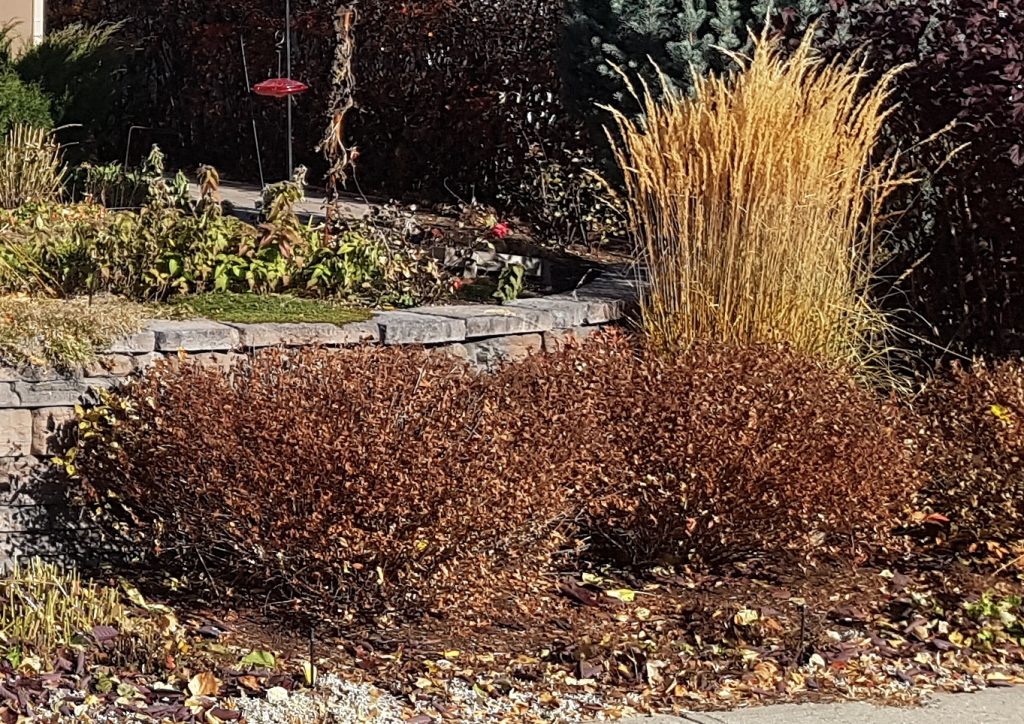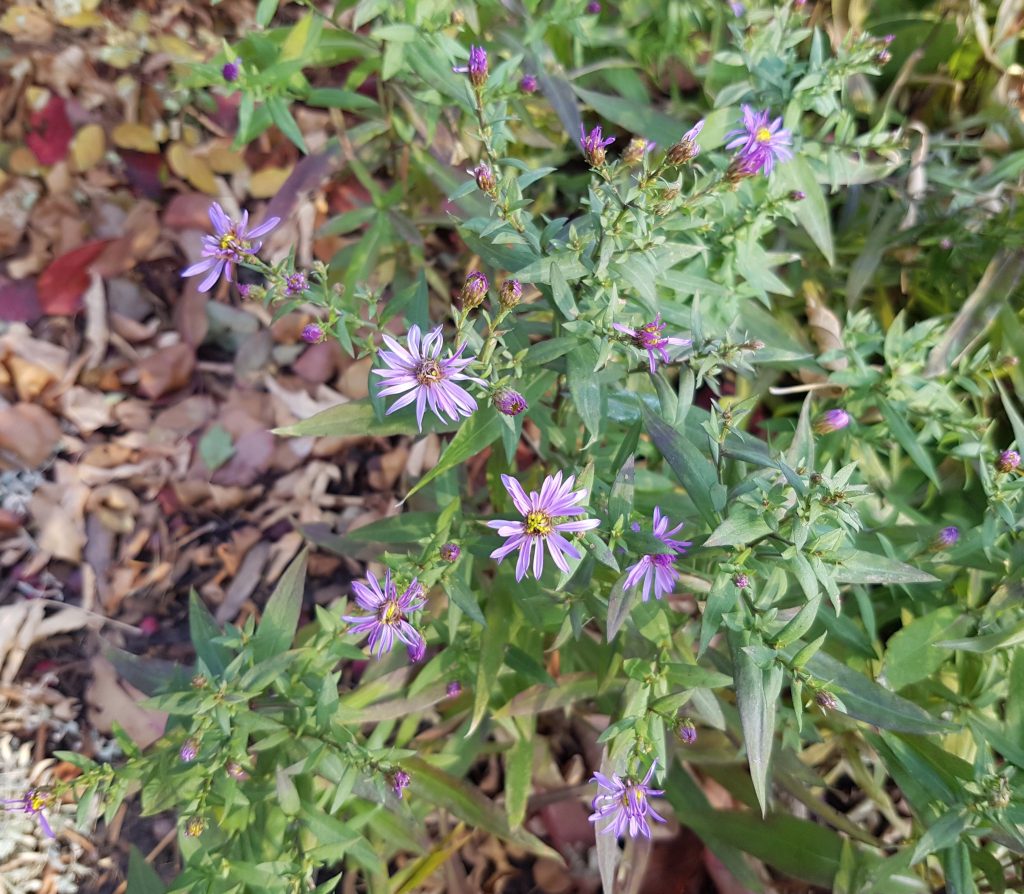There are a few things to consider in the fall, as the season begins to change.
Collecting the leaves.
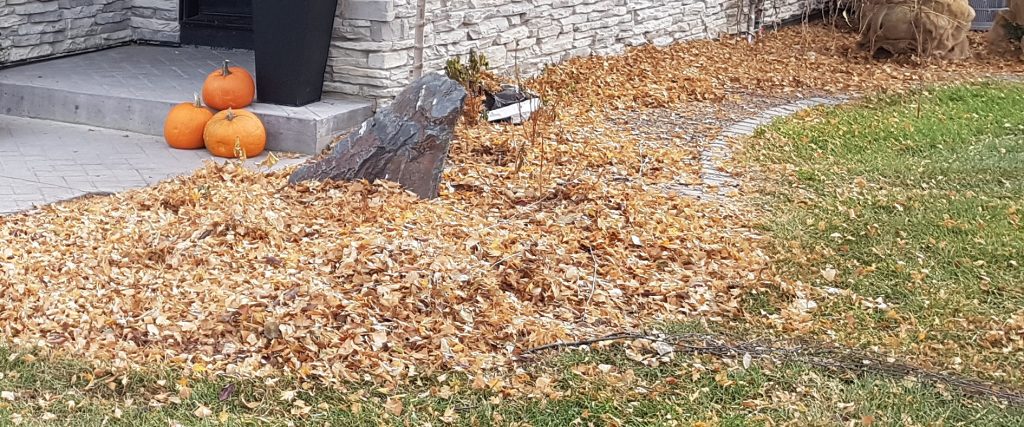
Many people want their leaves collected during the fall clean up and taken away. But, by collecting the leaves that fall from the trees and shrubs and hauling them away, we deprive the soil of the nutrient cycling (or recycling really) it needs to feed the plants in future growing seasons. In order for the trees to form those leaves, they draw in nutrients and minerals from deeper in the soil. When the leaves are no longer useful to the tree, they fall to the ground.
In a natural system, the leaves decompose and return the remaining nutrients and minerals to the surface soil, with the help of some “decomposer” organisms. It’s a cycle. Further to the nutrient recycling, the beneficial organisms (and they are all beneficial in some way) in the soil and on the plants, require some sort of protection from the winter weather. Leaving some leaves, to cover bare soil especially, is a perfect cover protection for theses little garden friends. The excess is removed in the spring to prevent mold and mildew. Though it is still better to leave bare ground covered with leaf litter.
In this climate, known locally as chinook country,
Where winter temperatures can swing from -30 C to 20 C in the matter of a few days, this extra layer of winter leaf cover helps to regulate the soil temperature. Ensuring things that go dormant in the fall, do not think that it’s spring for a day. Only to freeze when temperatures drop.
The best thing to do is to mow your leaves a few times as they fall. Raise the mower deck as high as it will go and close off the outlet. You can even attach a mulching blade if you like, to really mulch things up and save your grass blade. Mulched leaf litter left in the fall, has even been shown to reduce dandelion populations.
A combination of mulching the leaves on the lawns and moving some of the excess into the garden beds or compost pile for later use onsite is the best solution. The trees and plants worked hard to pull those nutrients from the soil for future generations of species. It is up to us to manage those resources onsite, for the health of the garden, the grass, and the people. We do not have to cart leaves to the landfill in bags.
Leaving perennial plants to go to seed to feed migrating birds.
Many plants end their seasonal life cycle by going to seed. This is the end result of the summers work, to procreate the species. It is our tendency to cut flowers off the plants as soon as they no longer “look good”. This is especially true in the fall. However, many migrating song birds and hibernating small animals use the oil rich seeds as a source of nutrients for long journeys and cold nights. There are plants that will spread like wild fire if left to be natural. Some thought and attention should be maintained, but for the most part these seeds are imperative to the survival of these small creatures.
Late flowers feed late pollinators
How often in the fall do we see really slow moving honeybees buzzing around the warm corners of the garden, or other little beings crawling on the snow or hovering by an open window. Although it looks to us that the garden is not active in the later season, it is very much. As much as the seeds feed the migrating song birds, so too the late pollinator insects. The late garden colour is highlighted to our eye in the fresh autumn snow. To a bee or bird, it can be a much needed food station. A few species of pollinating insects use the standing stocks and leaves of plants for their winter snooze as well.
Leaving plants up give over-wintering birds and small animals shelter
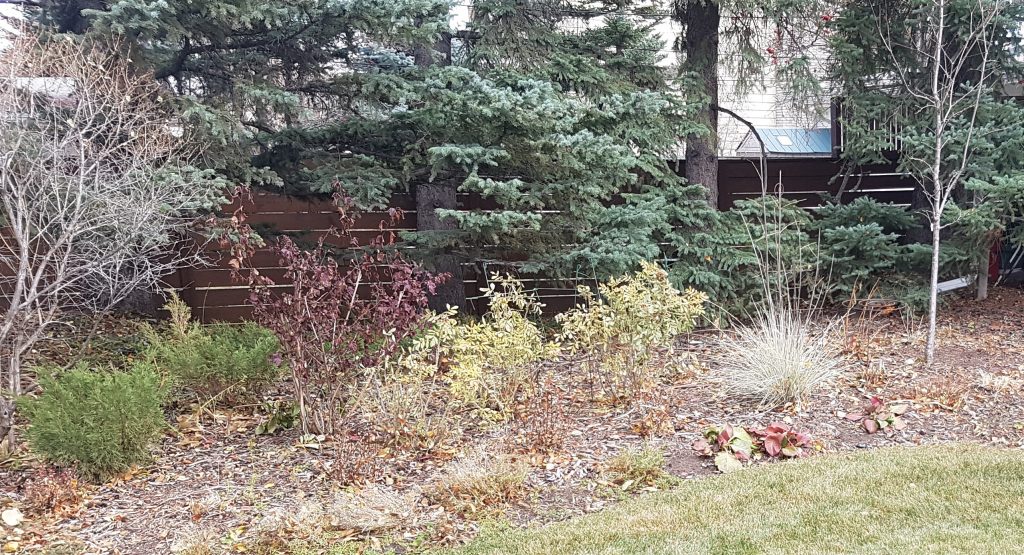
Those little song birds that we love to watch and hear all winter long need a place to spend the night and hide from those pesky predators, who also need to eat. Migrating birds need a respite from their long journeys. Spireas, Ninebarks, Karl Foresters and Willows are just some examples of shrubs perfect for shelter. It is always interesting in the spring where you can find the remanence of winter homes. The base of a shrub or the middle of a mound of grass. Also to keep in mind, some of the four-legged furry friends that can’t find homes in the garden, may try to come into the basement for the winter. Just saying….
As well, by leaving the perennials and shrubs a bit taller, they catch the snow and collect it around the crown, or base, of the plant. This snow insulates the core of the plant from the harsh winter air, further protecting it.
Leaf blowers can be destructive to beneficial insects and microorganisms.

Recent studies have shown that, besides the noise and air pollution, leaf blowers, especially the backpack ones and larger, can actually do a lot of damage to the garden. If you have ever used one, you also know the strain it puts on your body. Beneficial insects, lady bugs, wasps, beetles and the like, usually crawl under the foliage to escape the wind. When the wind is aimed directly into their hiding place, it is a direct attack on their lives. Most of them blow completely away. These insects add protection from the parasitic bugs, the scale and aphids, that cling tightly to the plants.
To be completely honest, I do use a blower in the winter for snow removal. There is a certain type and depth of snow that it works great for sidewalks and pathways. And, for some street fall clean up projects I will use one for large areas, but I try to limit the use as much as possible. There are municipalities that have banned the use of leaf blowers completely. Even more where restrictions have been placed on their use. For better or worse, blowers can be a useful tool, but very destructive if used haphazardly. Also, my blower is electric so it’s really quiet.
Removing debris from soil during the fall clean up means putting more nutrients in later.
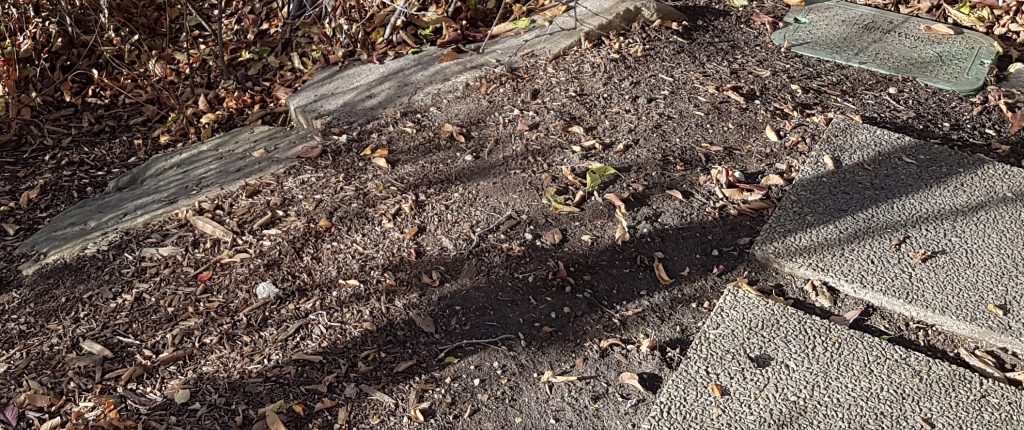
This ties in nicely with the leaf blower subject. If the debris is removed from and ornamental garden, or a row of vegetables are pulled from a vegetable garden. By removing the plant material, we then have to add nutrients and minerals back into the soil. If we are growing food to eat, or roses to look at, as time goes on if all we do is reap, eventually the plants we want to grow will use up the available resources. No matter the purpose, a garden should be looked at in a circular manner. The soil feeds the plants, the plants feed us (either nutritionally or emotionally), and we need to feed the soil.
The less we remove during the fall clean up, the less we have to add.
With a healthy population of soil dwelling organisms, plant material left on the soil in the fall will become the building blocks of soil in a surprising short amount of time, helping the plants flourish. Rather than removing the food source for the soil dwelling organisms, why not invite more to the party? Adding microorganisms and fungi to the soil, say by the addition of compost or the like, will help speed up the decomposition of the autumn leaf litter making it available to the plants that much faster. Meaning artificial nutrient additions to the garden and lawn can be reduced or even stopped completely, saving time and money.
Something to consider…

I like to cut back what will develop bad fungi under the snow in the beds. Mulch the leaves on the lawn, or move them INTO the garden beds, removing any excess in the spring. Cut back anything that will be a hazard in the winter, or block snow clearing activities on pathways, and trim things for structure and stability with snow cover.
